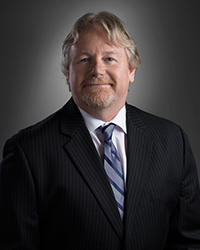|

Stop The Revolving Door! 11 Tips To Lower Employee Turnover
by Paul Edwards
For once, your team is humming along. Interviews are a thing of the past, all recent hires have been trained and HIPAA-trained, and team huddles are starting to feel productive again. Then, BAM! One of your hygienists informs you she is putting in her two weeks’ notice due to “personal differences,” and it’s time to start the whole cycle all over again.
Employee turnover is a headache for everyone in the office: dentists, managers, and team members who must take up the slack. A low employee retention rate drains money, time, and sanity—and unexpected departures can send shockwaves throughout your office. But there are proactive steps you can take to stop, or at least slow down, that revolving door employees seem to have in and out of your practice.
To limit the likelihood of vanishing employees, follow these steps:
1. Cherish Clarity. Be clear about your expectations from the get-go. Provide each employee with a job description that details their essential duties and the standards they are expected to meet. Update and mutually revisit these as needed. Dissatisfaction arises when expectations aren’t met—for employers AND employees—but great job descriptions help you both get on the same page, and help protect the practice.
2. Match with Mentors. The first few days at a new job can overwhelm even the most experienced of employees. Make each transition easier by assigning a mentor. The one-on-one relationship and guidance will help your newbie feel welcomed and wanted at your practice and give them a go-to friend for any questions they may not be comfortable asking management. Making sure no one falls out of sync during week one can greatly help retention down the line.
3. Check Your Checklist. With new employees, use a New Hire Checklist (you can get one from CEDR) to ensure you haven’t forgotten critical steps. This includes everything from being ready to welcome your new hire properly, to taking care of paperwork and training, to giving them the resources and tools they need for success at your practice. Follow the rest of these onboarding tips, too, for best results.
4. Focus on Feedback. No one wants to be shouting into—or working in—the void. Let your team know they’re valued with frequent feedback. This doesn’t have to be a formal process: even informal thank-yous to individuals or the group can mean a lot. They help employees feel their hard work is not just expected, but also noticed and appreciated. When something goes wrong, near-immediate coaching is also your best bet for a quick course correction.
5. Grow as a Group. Nothing takes the zip out of one’s drive like hitting a dead end. If the dentist is on board, let your team know the practice cares about their professional futures. Publicize any training options available. Make paths to bonuses or promotions apparent. Providing a clear outline for attaining success in your practice is one factor that can help keep employee satisfaction high.
6. Tap into Teamwork. Cutthroat attitudes slash team morale to ribbons in the work environment. Create a mission statement that emphasizes teamwork as a culture and stresses respect for each individual’s role within your practice. Be ready to reinforce this value, and to immediately tackle drama and those who cause it by using a progressive corrective coaching process.
7. Implement Incentives. Stretch your benefits beyond the basics by implementing simple (and fun!) incentives. Hold a contest, offer time off if possible, or surprise the team with a break room pizza party. (Just have the rules in place first for any monetary incentive bonuses—and know that those can impact overtime pay.) Great employees won’t need bribing to do good work, but mixing things up a bit can help keep spirits high.
8. Crank Up Communication. You know this, but communication is key, and it is a two-way street. Make yourself available to employees to hear ideas, complaints, and any other issues or concerns that might be lurking in the background. Check in regularly to build trust and troubleshoot problems early on. And keep in mind the adage, “We have two ears and one mouth so that we can listen twice as much as we speak.” This is your team members’ time to talk. Let them.
9. Beware of Burnout. Yes, we want our teams to be full of outstanding achievers and all-around workplace superheroes, but a stiff breeze can turn flying high into falling hard. Make sure you’re doing your part to help employees achieve a healthy life-work balance. Maybe that means offering some schedule flexibility, if it works in your practice. Maybe a new hire is sorely needed to lighten the load. Be aware of your office’s needs and do your best to make sure your dentist is, too.
10. Leaders Need Leadership, Too. Try to meet with the doctor/owner regularly about critical issues, and be sure you and any team leaders you manage are on the same page, too. From implementing changes to everyday coaching, it’s important that managers are consistent and present a united front. The more in sync you are, the better you can back each other up on tough decisions.
11. Empower by Example. Your team will look first and foremost to you to see what behavior and attitudes are appropriate in the office. Strive to demonstrate the same accountability, professionalism and standards of excellence that you ask of them. Not only will it show them that your high standards are attainable, but your ‘cheerful, can-do’ attitude may help even the cynics to acknowledge a bright side.
Of course, turnover will still be inevitable from time to time. People move, passions change, and some will find that they simply are no longer a good fit for your team. But by following the steps above and making the decision to actively focus on employee retention, you can stop (or at least slow down) that revolving door, and create a work environment that’s just a little harder to leave behind.

Paul Edwards is the CEO and Co-Founder of CEDR HR Solutions (www.cedrsolutions.com), which provides individually customized employee handbooks and HR solutions to dental offices of all sizes across the United States. He has over 20 years’ experience as a manager and owner, and specializes in helping dental offices solve employee issues. Paul is a featured writer for The Profitable Dentist and Dentaltown Magazine, and speaks at employment education seminars, conferences, and CE courses across the country. He can be reached at paul@cedrsolutions.com
|